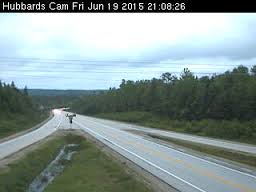
Part of me thinks this is long overdue.
That’s the part of me that drives Highway 103 often enough to have passed — more than once — within minutes of fatal car crashes. In the past decade, 28 people died in collisions along this mostly un-twinned major highway between Halifax and Yarmouth, making it one of the most deadly in the country.
In 2009, Prime Minister Stephen Harper described upgrading the 101 as “the priority the province and ourselves have identified.” In 2013, MacLellan declared “we’re looking forward to working with our federal counterparts to make sure we get a commitment and let’s get working.”
Yes, let’s.
But…
Another part of me wonders whether these sort of “generational” highway mega-projects aren’t already past their best-before dates.
That’s the part of me that’s become fascinated by autonomous vehicles (AVs), also known as driver-less cars, also known as the future.
According to a recent report from the Conference Board of Canada, major automakers will be selling fully autonomous cars by 2025.
That will change… everything.
“Self-driving cars could free up driving time, significantly reduce the number of car accidents, minimize road congestion and reduce the amount of fuel that we consume.” No wonder the Conference Board calls AVs the “next disruptive technology.”
None of that is to suggest driver-less cars are an unmixed blessing. The technologies that could wipe out the need for automobile insurance, for example, would also almost certainly wipe out thousands of existing jobs from taxi and deliver drivers, to long-haul truckers, to, well, to insurance providers.
But because AVs are much safer and more efficient drivers than we are, a separate KPMG study also suggested “traffic capacity will increase exponentially without building additional lanes or roadways… It may even be possible to convert existing vehicle infrastructure to bicycle or pedestrian uses.”
We won’t need more lanes to carry more traffic — or to make us safer.
Given that MacLellan’s mega-projects will probably take five years to green light, a decade to build and be designed to last another 30 years, shouldn’t we be asking ourselves — first — what kind of highways we’ll really need in 30 years.
And plan for the future, rather than the past.
***
- “Self-Driving Cars: The Next Revolution” KPMG
- “Automated Vehicles: The Coming of the Next Disruptive Technology” Conference Board of Canada








 STEPHEN KIMBER, a Professor of Journalism at the University of King's College in Halifax and co-founder of its MFA in Creative Nonfiction Program, is an award-winning writer, editor and broadcaster. He is the author of two novels and eight non-fiction books. Buy his books
STEPHEN KIMBER, a Professor of Journalism at the University of King's College in Halifax and co-founder of its MFA in Creative Nonfiction Program, is an award-winning writer, editor and broadcaster. He is the author of two novels and eight non-fiction books. Buy his books